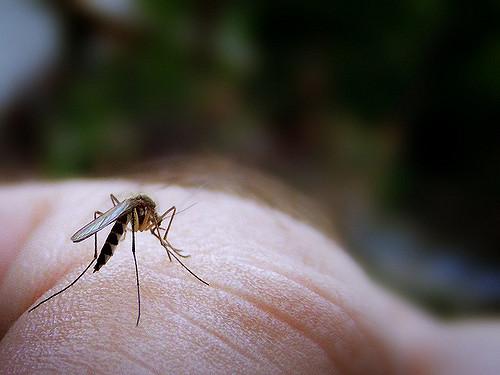With mosquito spawning rates reaching record highs in the Madison area and West Nile virus posing a looming threat along with it, University of Wisconsin researchers may have discovered a repellent that far-surpasses the efficacy of those used today.
A study published Jan. 16 in the journal Science Advances found a bacteria-based compound that could function three times more effectively than the popularly used repellent DEET, and eight times more effectively than the second most widely used picaridin.
Mayur Kajla, lead author of the study, said this landmark discovery was born from the work of UW entomology professor Que Lan in 2014. Lan was experimenting on a bacteria known as Xenorhabdus budapestensis, and observing whether the bacteria would kill adult mosquitoes after drinking blood containing the bacteria.
Lan found that if mosquitoes were exposed to blood containing Xenorhabdus they would avoid feeding altogether, effectively repelling them, Kajla said.
Lan passed away in the process of completing her study but it was inherited by UW entomology professor Susan Paskewitz, Kajla said.
In 2016, Paskewitz brought the research back to the surface and reached out to Kajla to take the role of lead study author. Over the course of the next two years, Kajla worked with a team of researchers to effectively develop an experiment with the mission of developing a microbial mosquito repellent, she explained.
“Our compound is actually three times more potent [than DEET], which also means that you can use three times lower concentration of this ingredient … and actually eight times more potent than picaridin,” Kajla said.
Edmund Norris, postdoctoral researcher at the University of Florida, said developing a repellent that rivals DEET has been a long-time goal of researchers in the field as the chemical compound is believed to not only be an unsustainable solution, but is also highly unfavorable among consumers.
Studies show mosquito colonies can grow resistant to DEET, Norris said. Further, the residue it leaves on the skin, its pungent smell and the fact that is unsafe on some clothing are among reasons people dislike using it.
Though the academic world is still conflicted over the adverse effects of the chemical, Norris said it’s troublesome that there’s a negative public perception of it.
“It is much more harmful to not use anything and get a very serious mosquito-borne disease like West Nile in the U.S. … than it is to apply a compound like DEET that has very minimal to no harmful effects,” Norris said.
UW students aid scientists after Hurricane Harvey causes mosquito boom
Developments in this area have not been made simply because DEET is so effective, Norris said. Research has been done in the field, but the majority of findings reveal alternatives either do not last as long, or they are not as effective at repelling mosquitoes as DEET is. In many cases, he explained, alternative repellents face both issues.
A small handful of viable alternatives exist though, Norris noted. Picaridin, a compound very similar to DEET’s structure, and lemon eucalyptus oil, an effective natural repellant, are just a few. Still, these alternatives barely hold up in comparison to DEET.
But with the new study completed and published, the door is open for development in the field of repellents with a new focus on bacteria-based compounds, Norris said.
“It represents a new chemistry and we are really at the groundbreaking stage of what the potential might be for repelling mosquitoes,” Norris said.
Global Health Institute director discusses effect of climate change on health, social justice
After finding that the experiment successfully repelled mosquitoes, UW biotechnology professor Greg Barrett-Wilt identified that the compound in the bacteria that functions as a repellent was part of a chemical group known as fabclavines.
Though not directly observed, Kajla is hopeful the compound will be effective in repelling other pests as well. An alternate experiment she conducted found that the compound kills the Colorado potato beetle, which may even indicate larger utilization as a pesticide as research expands surrounding fabclavines.
Research moving forward surrounding the utility of fabclavines can flow down many avenues, Kajla said.
Little is known about the effects that the compound will have on the skin of humans and animals, so testing must be conducted to ensure safety when applied, Kajla said.
Norris said he is particularly interested in further dissecting the compound and identifying which elements play the repellent effect. This would also push toward manipulating the compound to be even more effective as a repellent, he said.
The Lab Report: Investigating how bacteria understand environmental signals
Additionally, the physiological mechanism surrounding why mosquitoes are repelled from repellents is still not fully understood.
“The simple answer is that these repellents act at various receptors in the mosquito’s antennae and essentially the mosquito perceives these molecules as stinky or aversive stimuli,” Norris said.
The study has opened a new direction, allowing for finer research to be done to identify what exactly happens when mosquitoes come in contact with repellents, Norris said.














